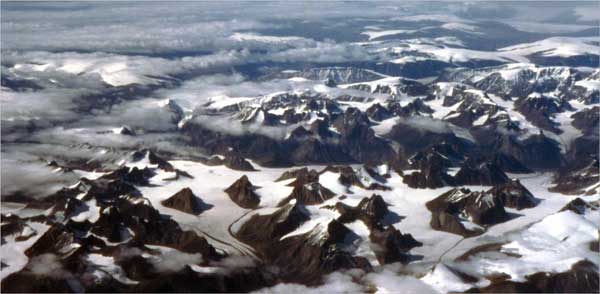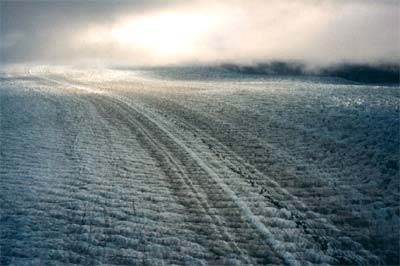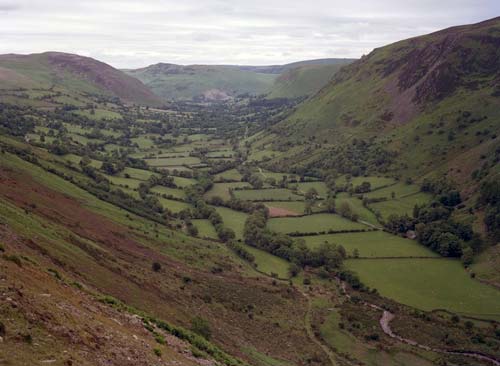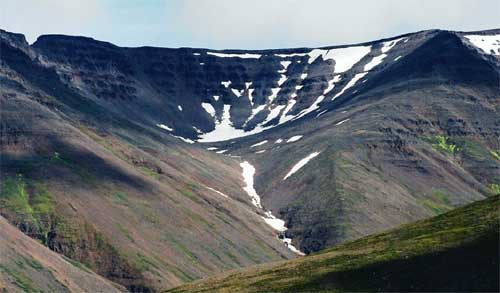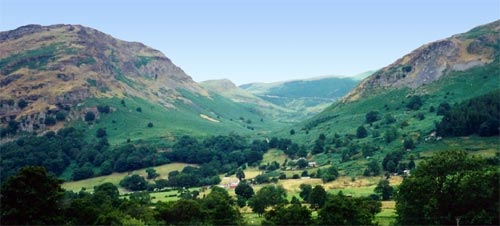Alpine glaciers
Alpine glaciers begin high up in the mountains in bowl-shaped hollows called cirques. As the glacier grows, the ice slowly flows out of the cirque and into a valley. Several cirque glaciers can join together to form a single valley glacier. When valley glaciers flow out of the mountains, they spread out and join to form a piedmont glacier.
The ice in contact with the valley walls contains a lot of rock and sediment  which makes the ice dark grey or brown. When several cirque glaciers merge into a single valley or piedmont glacier the ice has a striped appearance.
which makes the ice dark grey or brown. When several cirque glaciers merge into a single valley or piedmont glacier the ice has a striped appearance.
Zones of an alpine glacier:
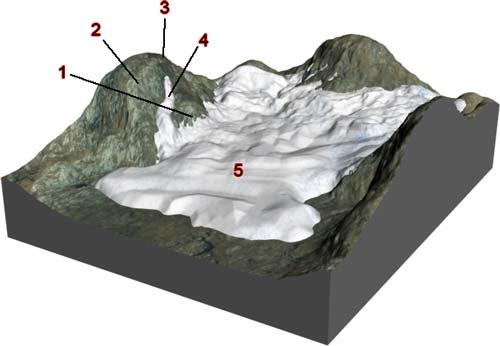
Click to view larger and see the legend.
- Truncated spur
- Arêtes
- Horn
- Hanging valley
- Glacier
Alpine glaciers pluck and grind up rocks creating distinctive U-shaped valleys and sharp mountain peaks and ridges.
An arête is a sharp ridge of rock  that is left between two adjacent glaciers.
that is left between two adjacent glaciers.
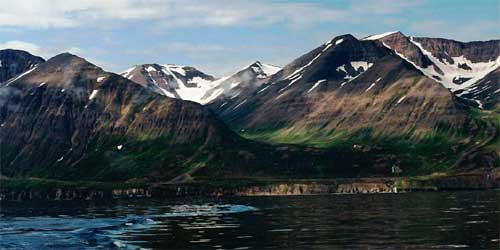
Truncated (cut off) ridges and hanging valleys form when small valley glaciers merge with a single large valley glacier.
Sometimes a small lake called a tarn will form at the bottom of the cirque. There are three tarns in a small area of Cumbria, UK, on the geological map 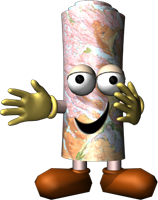 below, they are the black shapes.
below, they are the black shapes.
Horns are steep mountain peaks that form when a mountain has been surrounded by cirque glaciers, such as the Matterhorn in Switzerland.
Glaciated valleys that are flooded with sea-water  are called fjords. Some fjords are over 1 km deep.
are called fjords. Some fjords are over 1 km deep.

« Back 








